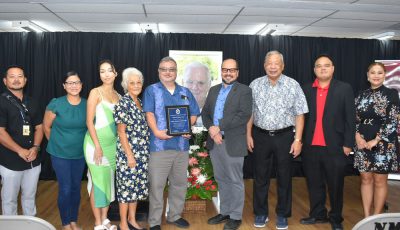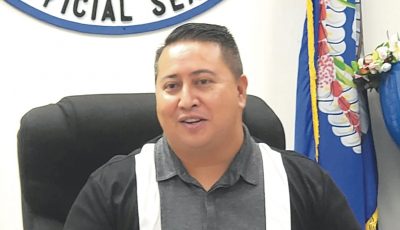How the ‘Build Back Better’ plan can benefit US territories
Editor’s note: The following is the author’s written testimony before the U.S. House Committee on Natural Resources’ oversight hearing on “How the Biden Administration’s Build Back Better plan can benefit the U.S. territories.” It is being published as a series due to its length. The first part was published on March 26, 2021; the second on March 29, 2021; the third, on March 30, 2021.
Fourth of a series
The relationship between infrastructure developments and access to labor under the CW-1 visa classification and the Northern Mariana Islands U.S. Workforce Act is not solely limited to availability of workers. Under the present law, the CNMI must produce an annual prevailing wage calculation that will govern the wages paid to employees petitioned under the CW-1 program. Should the sampling requirements for this survey provided by the U.S. Department of Labor not be met for a particular occupational category (i.e. three employers with 30 employees for each Standard Occupational Classification), then the wages revert to those in Guam or in the national prevailing wage for that specific occupation. This requirement presents two challenges that must be noted:
First, the CW-1 visa is the only program within the U.S. Immigration System that requires an annual survey. Applications for H visas utilize a two-year timeframe for survey applicability. This presents a pronounced issue with labor market and business cycle fluctuations, wherein disruptions to the economy, such as disasters or industry closures, have a profound impact to the survey results that establish a benchmark for future surveys, leading to rapidly inflating costs that do not account for economic conditions.
Secondly, the reversion to Guam wages negates the important distinctions between the two economies of this region. Guam is a larger, more developed economy, with a different labor force makeup that supports different types of economic activity. One would not make the case that wages in California would appropriately depict the labor conditions in Oregon, yet for many occupations, wages represent the Guam economy and not the conditions of the CNMI. This raises significant challenges to the long-term labor force planning required of large-scale development projects. Should a development, as is the case, require foreign labor to construct, the variations that occur through the present prevailing wage processes, multi-year labor cost projections represent a significant hurdle toward prudent utilization of available resources.
The CNMI’s geographic location further impedes progress beyond labor costs and acquisition. Most notably, the impacts caused by Super Typhoon Yutu brought to light the vulnerability of our built environment to the forces of nature. This is a pronounced demonstration of the risks and degradation to our physical infrastructure, but the climatic conditions of the islands, seismic activity, and prevalence of natural disasters require a level of infrastructure investment to mitigate this impacts that are on a magnitude far greater than that of the larger United States. Adding to this the complications with transporting the range of construction materials to the CNMI, and the processes for undertaking large-scale projects in this remote region, significant hurdles present themselves as increased costs of development.
A notable example of these challenges with construction in the CNMI is outlined in a recent Government Accountability Office Report (GAO-20-614T) that found “significant delays” in the implementation of FEMA’s Permanent Housing Construction Program due to contracting and construction challenges. These specific challenges have resulted in 65% of the program’s applicants opting out the program due to the need for housing sooner than FEMA could provide for it.
To further support holistic resiliency investment efforts, we need the support of our federal partners to streamline processes, reduce the obstacle of complex requirements and lengthy approval periods, and allow for significant flexibility. The CNMI asks that the territories be provided the flexibility necessary to determine what infrastructure needs are most critical to them and to determine how federal funding resources dedicated to this are ultimately utilized. Rather than a “one-size-fits-all” approach, the challenges that are unique to the territories will require a plan that can be customized by and for the territories.
To be continued
Ralph DLG Torres (Special to the Saipan Tribune)
Ralph DLG Torres is governor of the Commonwealth of the Northern Mariana Islands.



























